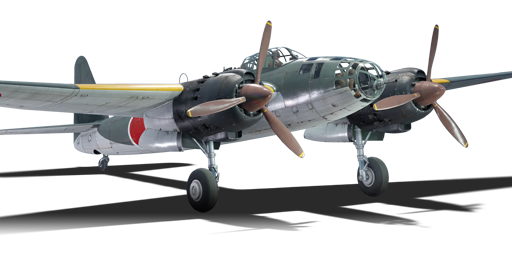




The P1Y1 mod.11, designated as the Ginga 11 (銀河一一型), was a land-based long-range (dive-)bomber that was requested by the Japanese Navy after learning of the successes in the European theatres and out of their own experience with their own Type 96 G3Ms (and later Type 1 G4Ms) attack bombers lacking the ability to commit dive bombing actions. Initial development began by examining a purchased Ju 88 A with little real valuable lessons being drawn from the Ju 88 and development continued, with the last prototypes being rushed to be used in service production due to the lengthy development time and deterioration of the war situation. This resulted in a late-war multirole high-speed bomber that was troubled with maintenance and overall production numbers.
The Ginga was introduced in Update 1.63 "Desert Hunters". This bomber is one of the fastest at its battle rating and plays like the German Ju 288 C and Ar 234 B-2. The main strategy is to dive, release bombs, escape, and repeat. The P1Y1 can reach over 675 km/h (400 mph) in a dive, which outruns most fighters. However, the P1Y1 is also very fragile, with weak defensive guns and no turrets on the underside. This makes it vulnerable to attacks from below and to fighters that can catch up with it. The P1Y1 needs to rely on its speed and agility to evade enemies or seek friendly cover or the home base. If a heavier plane is chasing it, the P1Y1 can usually outturn it and make it lose energy and retreat. If a plane is behind its rear gunner, the gunner can fire and force the enemy to dodge and lose aim.
flaps
flaps
flaps
brake
| Belt | Belt filling | Armor penetration (mm) at a distance: | |||||
|---|---|---|---|---|---|---|---|
| 10 m | 100 m | 500 m | 1000 m | 1500 m | 2000 m | ||
| T/HEF/APHE | 19 | 17 | 12 | 7 | 5 | 4 | |
| HEF-T/APHE/APHE/APHE/APHE | 19 | 17 | 12 | 7 | 5 | 4 | |
| HEF/HEF-T/HEF/APHE/HEF-T | 4 | 4 | 4 | 4 | 4 | 4 | |












Flight performance | |
|---|---|
Survivability |
|---|
Weaponry | |
|---|---|